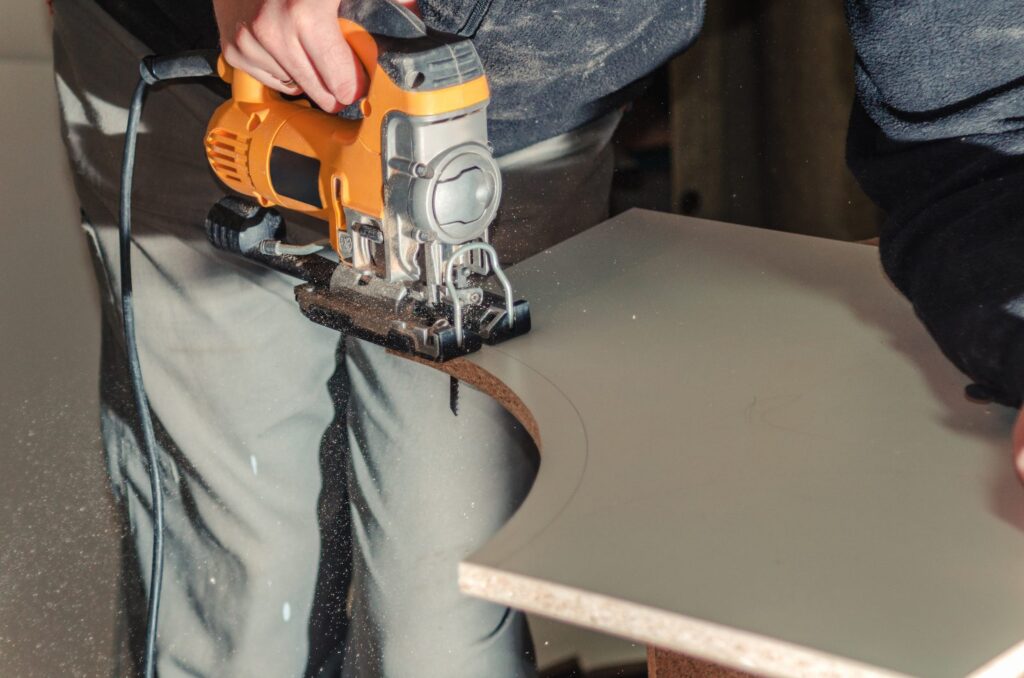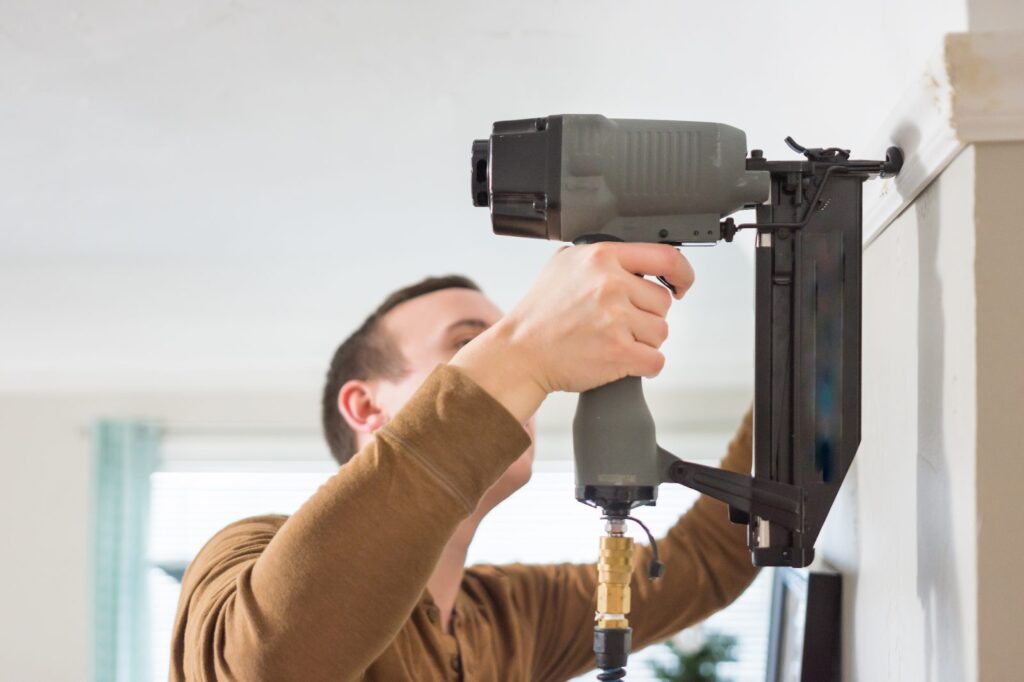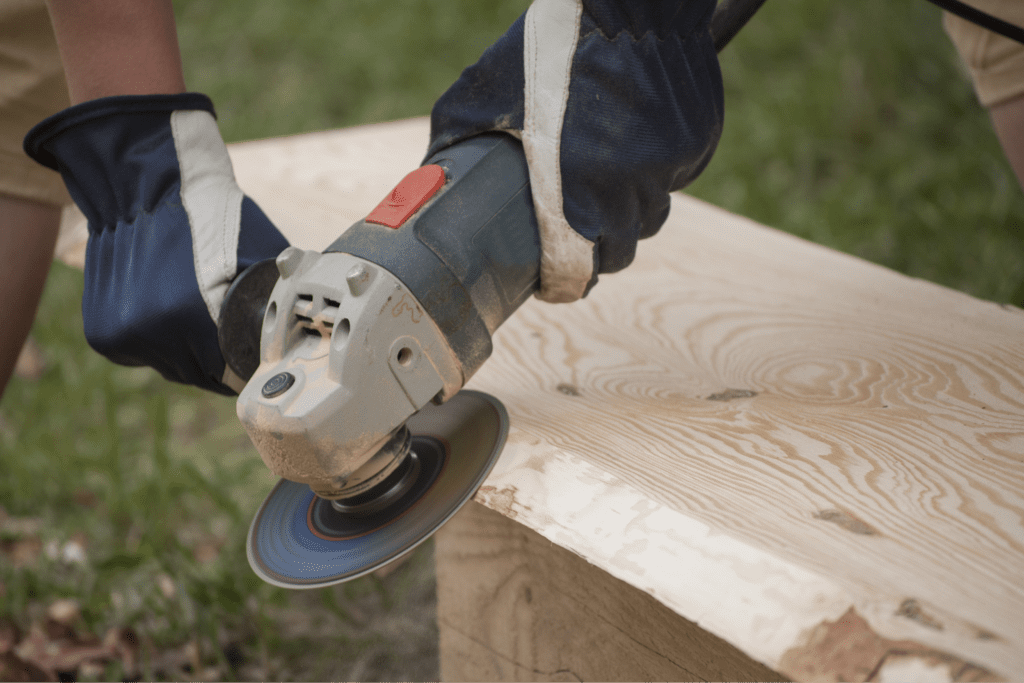Get the week's most popular posts delivered to your inbox.
Our weekly update is free yet priceless and you're less than a minute away from getting the current edition.
In the unlikely event we disappoint, you can unsubscribe with a single click!
Last Updated on October 30, 2025 by teamobn
It’s nice to have a project to work on. After all, work keeps you busy five days a week, and the kids need your time on the weekend. Finding the time for your projects is tricky, but it’s well worth carving out the space and time to do something for yourself or the house.
You feel a sense of accomplishment when you have completed a project. Usually, you’ve got something physical to show for it as well, which you can look at every day and remind yourself of your achievement.
For some people, their project is a piece of needlework or embroidery. For others, it’s a long, immersive video game. Some people might enjoy painting or sketching. And for some, a DIY woodworking or home improvement project is what they enjoy.
How to Choose the Perfect Power Tools for Your Next Project
If you’re in the latter camp, you will need the right power tools and other tools such as chisels and pliers. This helpful article will help you power up for your projects, and choose the right power tools for the job. Read on to discover more.
Invest in A Top Quality Saw
If you are working with timber, such as hardwood or plywood, you want a tool that can easily see through the timber. So, the first tool you should acquire is a table, circular, or power saw.
A hand saw is sufficient but will take much longer than a power saw and usually offer a less defined cut. For this reason, you should definitely choose a power saw.
There are heaps of top options on the market – it’s worth investigating different brands, reading or watching some reviews, and choosing a power saw that suits your needs and will match your project.
You may not need an expensive, top-range power saw, but be wary of the cheap options as they can be inferior. The middle ground is sometimes the right approach for power tools for home improvement and other projects.
Still, Sawing? A Jigsaw is the Way to Go
Another power tool you should definitely invest in is a jigsaw. This power tool makes intricate, curved, and precise cuts in wood, metal, and other materials.
It differs from a circular, table or another power saw because the blade is much smaller and can be used for very narrow, minor cuts that a bigger saw would struggle with. It is the perfect complementary addition to the budding woodworker’s tool collection. 
Get A Power Sander
Continuing to power up with power tools, you should also get a power sander to add to your arsenal. You can use this excellent tool for all your sanding needs.
Sanding timber is, but one use, but a power sander can also prepare plasterboard for a lick of paint or can be used to prepare other surfaces in preparation for a fresh coat.
For instance, say you’ve torn up your old deck with a pry bar and laid the fresh timber; now you need to sand back the planks to give it a new coat of sealant, and a power sander will make this job a breeze.
Another use for a power sander is to sand back cabinetry if you’re planning to repaint a different color, which can be a great way to breathe some new life into your kitchen or bathroom cabinets.
Invest in A Drill and Impact Driver
The next set of power tools to acquire is a power drill and impact driver. You will use the power for drilling holes in various objects – walls, timber, and even bricks or mortar. You should get a top-quality, extensive drill bit set that will cover all the different types of drilling work you will undertake.
You can grab this at the shop you buy your drill from – most hardware stores will have this, or you can shop online for a lower price. Sometimes you can even find a bargain on second-hand online marketplaces such as Facebook and Gumtree.
The other tool mentioned, the impact driver, is a bit like a power drill. Still, instead of drilling
holes, it is used for screwing things into the holes you’ve drilled quickly and efficiently. You can use the impact driver to insert screws or bolts rapidly and with minimal effort.
Of course, it is possible to put screws in using a hand-powered screwdriver. This is not recommended, as it is time-consuming and arduous. And with the time you save using the impact driver, you can move on to other jobs quicker and finish your projects in record time.
Ditch the Hammer for a Nail Gun
If you’re still using a hammer to hammer in nails, you’re behind the eight ball in terms of time consumption and effort.
A hammer, an ancient and effective tool whose design has not changed in hundreds of years, still requires lots of arm power and will tire you out quickly if you have a lot of nailing.
A powered nail gun is the perfect solution to this problem. It will allow you to drive nails into the timber quickly and with excellent precision and control.
Grab an Angle Grinder
An angle grinder is a handheld power tool, either corded or battery-operated, that you can use for various metal fabrication and alteration jobs. You can cut, grind, deburr, finish, and polish all sorts of metal with an angle grinder.
An angle grinder uses thin disks designed for cutting metal. These are incredibly useful for trimming, rebar, metal pipe, tiles, or even clipping off rusty nail heads from timber.
The fatter disks designed for grinding are helpful for DIY tasks, such as smoothing rough spots in concrete, removing rust, and sharpening bladed tools.
If any of your projects include working with metal, this is an excellent addition to your tool collection.
Battery Platforms and Amp-Hour Math for Power Tools
Choosing a battery system for power tools affects performance, cost, and workflow. Get the volts, amp-hours, and chargers right. You’ll cut faster, swap less, and keep jobs moving all weekend.
Volts Explain Speed, Not Runtime
Voltage sets motor speed and cutting authority. Higher-voltage power tools maintain RPM under load and feel less bogged down in rips, bores, and grinding. Runtime doesn’t come from volts alone. Match voltage to material and bit size so you aren’t overspending on packs you don’t need. Keep expectations realistic and watch blade sharpness, which steals more speed than most batteries ever will.
Amp-Hours Determine How Long You Work
Amp-hours are the fuel tank. A 5.0Ah pack has roughly twice the usable energy of a 2.5Ah pack at the same voltage. You’ll sand longer, drill more holes, and make more crosscuts before swapping. Heavier packs change tool balance, so pick the smallest Ah that clears a full task segment. Two mid-size packs often beat one massive brick because charging cycles flow better.
One Platform, Many Tools, Lower Costs
Sticking to a single battery ecosystem simplifies everything. Chargers, packs, and adapters stay compatible across drills, saws, nailers, and lights. You’ll spend less on duplicates and keep more packs ready. Platform loyalty also unlocks bundle deals and bare-tool savings for power tools you add later. Consolidation reduces shop clutter and shortens the time it takes to grab, click in, and go.
Chargers and Charge Rates Shape Your Day
Fast chargers cut downtime, yet they add heat. Standard chargers are gentler and can extend battery life. Build a charging station with airflow, labeled bays, and a rotation habit. Top up during layout and cleanup so packs finish while you work. A smart routine often delivers more real productivity than chasing the absolute largest amp-hour numbers.
Cold, Heat, and Storage Affect Battery Health
Lithium cells hate extremes. Cold saps power and heat shortens life. Let packs warm to room temp before charging, and never leave them in a hot vehicle. Store at partial charge for long breaks. Keep contacts clean so power tools draw steady current without arcing. Treat batteries well and they’ll return the favor with stable runtime and consistent torque.
A Savvy Tool Summary
This helpful article has helped you to power up and choose the right power tools for your projects. If you slowly acquire these power tools, you’ll be ready and equipped to handle most DIY projects around the house.
A final tip is to use all the proper safety precautions when using power tools, such as gloves, eye protection, and closed-toe boots.
Get the week's most popular posts delivered to your inbox.
Our weekly update is free yet priceless and you're less than a minute away from getting the current edition.
In the unlikely event we disappoint, you can unsubscribe with a single click!






